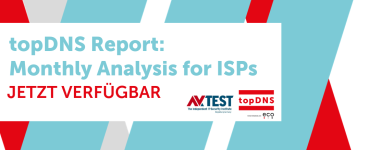The US Government announced in March its intention to give up its role as supervisor of the IANA functions. Since then, there has been a world-wide discussion about who the IANA Stewardship should be transferred to. We spoke to Thomas Rickert, eco Director of Names and Numbers and Member of the GNSO Council at ICANN.
Mr. Rickert, is the IANA Stewardship Transition really associated with a threat to the stability of the Internet?
What are known as the IANA functions are performed by ICANN, the Internet Corporation for Assigned Names and Numbers, and supervised by the US Department of Commerce. One of the functions is the administration of what is called the root zone. If a country ending or a generic domain ending should be technically available world-wide, then it needs to be registered in the root zone. ICANN examines applications for delegation and re-delegation and presents them to the US Government. This is a process that requires hardly any resources and has provided no problems so far.
There is no reason to assume that anything would change if this “quality assurance” were undertaken not by the US Government, but rather in another form. Those who suggest that the Internet will become insecure are inflating the topic for political reasons or out of technical ignorance.
For the successor, emphasis has been placed on the concept of the multi-stakeholder model. What is the current status of the discussion?
The US Government has made clear that the supervision will not be transferred to another government or intergovernmental organization, but rather to the global Internet community, which includes, along with governments, also the civil society and industry. This is an excellent approach. ICANN has embodied the multi-stakeholder model for many years now, and the interaction of the different sectors is running increasingly well. It is the model of the future for Internet interests.
The Internet community is currently working on two topic, namely on the IANA transition from the technical perspective, and secondly on what is known as the accountability mechanisms, in order to ensure that ICANN remains a reliable partner for the community when the US Government is no longer able to take action.
The technical community presented a proposal for further discussion on 1 December. The group that is focusing on the accountability mechanisms will meet for the first time on 9 December.
Is there sufficient time for the coordination of the proposals for the future of IANA?
Next autumn, the existing contract between ICANN and the US Government will end. To work out a consensus solution by then, one which includes and commits all interest circles world-wide, is an ambitious goal. The objective should indeed be to have the process completed by then. However, more important than the time dimension is doing it right and not losing this chance. The IANA contract provides for the possibility of being extended. If required, then, more time can be taken to work on the solution.



